Phowa
|
Read other articles:

ŃüōŃü«ķĀģńø«Ńü½Ńü»ŃĆüõĖĆķā©Ńü«Ńé│Ńā│ŃāöŃāźŃā╝Ńé┐Ńéäķ¢▓Ķ”¦ŃéĮŃāĢŃāłŃü¦ĶĪ©ńż║Ńü¦ŃüŹŃü¬Ńüäµ¢ćÕŁŚŃüīÕɽŃüŠŃéīŃü”ŃüäŃüŠŃüÖ’╝łĶ®│ń┤░’╝ēŃĆé µĢ░ÕŁŚŃü«Õż¦ÕŁŚ’╝łŃüĀŃüäŃüś’╝ēŃü»ŃĆüµ╝óµĢ░ÕŁŚŃü«õĖĆń©«ŃĆéķĆÜÕĖĖńö©ŃüäŃéŗÕŹśń┤öŃü¬ÕŁŚÕĮóŃü«µ╝óµĢ░ÕŁŚ’╝łÕ░ÅÕŁŚ’╝ēŃü«õ╗ŻŃéÅŃéŖŃü½ÕÉīŃüśķ¤│Ńü«ÕłźŃü«µ╝óÕŁŚŃéÆńö©ŃüäŃéŗŃééŃü«Ńü¦ŃüéŃéŗŃĆé µ”éĶ”ü ÕŻ▒õĖćÕååµŚźµ£¼ķŖĆĶĪīÕłĖ’╝łŃĆīÕŻ▒ŃĆŹŃüīÕż¦ÕŁŚ’╝ē Õ╝ÉÕŹāÕååµŚźµ£¼ķŖĆĶĪīÕłĖ’╝łŃĆīÕ╝ÉŃĆŹŃüīÕż¦ÕŁŚ’╝ē µ╝óµĢ░ÕŁŚŃü½Ńü»ŃĆīõĖĆŃĆŹŃĆīõ║īŃĆŹŃĆīõĖēŃĆŹŃü©ńČÜŃüÅÕ░ÅÕŁŚŃü©ŃĆüŃĆīÕŻ▒ŃĆŹŃĆīÕ╝ÉŃĆŹ…
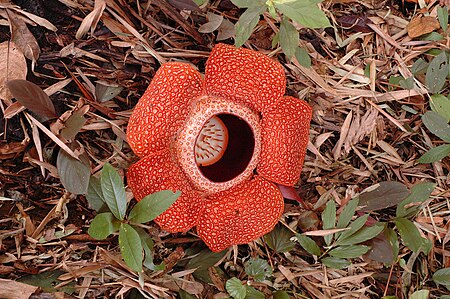
Rafflesia Rafflesia arnoldii Klasifikasi ilmiah Domain: Eukaryota Kerajaan: Plantae (tanpa takson): Tracheophyta (tanpa takson): Angiospermae (tanpa takson): Eudikotil (tanpa takson): Rosid Ordo: Malpighiales Famili: Rafflesiaceae Genus: RafflesiaR.Br. ex Thomson bis[1] Spesies tipe Rafflesia arnoldiiR.Br. Spesies Lihat teks Rafflesia atau puspa nusa adalah sebuah genus tumbuhan berbunga yang semua spesiesnya hidup sebagai parasit. Anatomi tumbuhan pada Rafflesia tidak lengkap.[2]…

µŁżµóØńø«ÕÅ»ÕÅéńģ¦Ķŗ▒Ķ¬×ńČŁÕ¤║ńÖŠń¦æńøĖµćēµóØńø«µØźµē®ÕģģŃĆé (2021Õ╣┤5µ£ł6µŚź)Ķŗźµé©ń夵éēµØźµ║ÉĶ»ŁĶ©ĆÕÆīõĖ╗ķóś’╝īĶ»ĘÕŹÅÕŖ®ÕÅéĶĆāÕż¢Ķ»Łń╗┤Õ¤║ńÖŠń¦æµē®ÕģģµØĪńø«ŃĆéĶ»ĘÕŗ┐ńø┤µÄźµÅÉõ║żµ£║µó░ń┐╗Ķ»æ’╝īõ╣¤õĖŹĶ”üń┐╗Ķ»æõĖŹÕÅ»ķØĀŃĆüõĮÄÕōüĶ┤©ÕåģÕ«╣ŃĆéõŠØńēłµØāÕŹÅĶ««’╝īĶ»æµ¢ćķ£ĆÕ£©ń╝¢ĶŠæµæśĶ”üµ│©µśÄµØźµ║É’╝īµł¢õ║ÄĶ«©Ķ«║ķĪĄķĪČķā©µĀćĶ«░{{Translated page}}µĀćńŁŠŃĆé ń║”ń┐░µ¢»ķĪ┐ńÄ»ńżüKalama Atoll ńŠÄÕ£ŗµ£¼Õ£¤Õż¢Õ░ÅÕ│ČÕČ╝ Johnston Atoll µŚŚÕ╣¤ķó鵣ī’╝ÜŃĆŖµś¤µóصŚŚŃĆŗThe Star-Spangled Bannerń┤äń┐░µ¢»ķĀōńÆ░ńżüÕ£░Õ…

FreeridgeGenre Remaja Drama komedi Pembuat Lauren Iungerich Jamie Uyeshiro Jamie Dooner Eddie Gonzalez Jeremy Haft Pemeran Keyla Monterroso Mejia Bryana Salaz Tenzing Norgay Trainor Ciara Riley Wilson Peggy Blow MusikKOVASNegara asalAmerika SerikatBahasa asliInggrisJmlh. musim1Jmlh. episode8ProduksiProduser eksekutif Lauren Iungerich Eddie Gonzalez Jeremy Haft Jamie Dooner Jamie Uyeshiro Produser Eric Gutierrez Will Rack David Berke Sinematografi Eric Treml Logan Schneider Penyunting Adam Burr E…

ŃĆīŃéóŃāŚŃā¬Ńé▒Ńā╝ŃéĘŃā¦Ńā│ŃĆŹŃü»ŃüōŃü«ķĀģńø«ŃüĖĶ╗óķĆüŃüĢŃéīŃü”ŃüäŃüŠŃüÖŃĆéĶŗ▒Ķ¬×Ńü«µäÅÕæ│Ńü½ŃüżŃüäŃü”Ńü»ŃĆīwikt:Õ┐£ńö©ŃĆŹŃĆüŃĆīwikt:applicationŃĆŹŃéÆŃüöĶ”¦ŃüÅŃüĀŃüĢŃüäŃĆé ŃüōŃü«Ķ©śõ║ŗŃü½Ńü»ĶżćµĢ░Ńü«ÕĢÅķĪīŃüīŃüéŃéŖŃüŠŃüÖŃĆéµö╣Õ¢äŃéäŃāÄŃā╝ŃāłŃāÜŃā╝ŃéĖŃü¦Ńü«ĶŁ░Ķ½¢Ńü½ŃüöÕŹöÕŖøŃüÅŃüĀŃüĢŃüäŃĆé Õć║ÕģĖŃüīŃüŠŃüŻŃü¤ŃüÅńż║ŃüĢŃéīŃü”ŃüäŃü¬ŃüäŃüŗõĖŹÕŹüÕłåŃü¦ŃüÖŃĆéÕåģÕ«╣Ńü½ķ¢óŃüÖŃéŗµ¢ćńī«ŃéäµāģÕĀ▒µ║ÉŃüīÕ┐ģĶ”üŃü¦ŃüÖŃĆé’╝ł2018Õ╣┤4µ£ł’╝ē ÕÅżŃüäµāģÕĀ▒ŃéƵø┤µ¢░ŃüÖŃéŗÕ┐ģĶ”üŃüīŃüéŃéŖŃüŠŃüÖŃĆé’╝ł2021Õ╣┤3µ£ł’╝ēÕć║ÕģĖµ…

SMP Negeri 5 Kota SorongSuasana SMP Negeri 5 Kota Sorong (2013)InformasiJenisSekolah Menengah PertamaAkreditasiAKepala SekolahHerlin Senterlina Maniagasi, S.PdJumlah kelas30 kelasRentang kelasKelas VII Sampai kelas IXKurikulumK13 & Kurikulum Tingkat Satuan Pendidikan dan Kurikulum 2013 berlaku bagi kelas 7 & 8 smpJumlah siswa978AlamatLokasiJalan Basuki Rahmat Km.12, Kelurahaan Klamana, Kota Sorong, Papua Barat Daya, IndonesiaTel./Faks.0951323031Situs webyahoo.co.idMot…

ąÆč¢ą╣čüčīą║ąŠą▓ąŠ-ą╝čāąĘąĖčćąĮąĄ čāą┐čĆą░ą▓ą╗č¢ąĮąĮčÅ ąŚą▒čĆąŠą╣ąĮąĖčģ čüąĖą╗ ąŻą║čĆą░茹ĮąĖ ąóąĖą┐ ą▓č¢ą╣čüčīą║ąŠą▓ąĄ č乊čĆą╝čāą▓ą░ąĮąĮčÅąŚą░čüąĮąŠą▓ą░ąĮąŠ 1992ąÜčĆą░茹Įą░ ąŻą║čĆą░茹Įą░ ąĢą╝ą▒ą╗ąĄą╝ą░ čāą┐čĆą░ą▓ą╗č¢ąĮąĮčÅ ąÆč¢ą╣čüčīą║ąŠą▓ąŠ-ą╝čāąĘąĖčćąĮąĄ čāą┐čĆą░ą▓ą╗č¢ąĮąĮčÅ ąŚą▒čĆąŠą╣ąĮąĖčģ čüąĖą╗ ąŻą║čĆą░茹ĮąĖ ŌĆö čüčéčĆčāą║čéčāčĆąĮąĖą╣ ą┐č¢ą┤čĆąŠąĘą┤č¢ą╗ ąōąĄąĮąĄčĆą░ą╗čīąĮąŠą│ąŠ čłčéą░ą▒čā ąŚą▒čĆąŠą╣ąĮąĖčģ čüąĖą╗ ąŻą║čĆą░茹ĮąĖ ą┐čĆąĖąĘąĮą░č湥ąĮąĖą╣ ą┤ą╗čÅ ą┐ą╗ą░ąĮčāą▓ą░ąĮą…

English sailor, politician, and courtier (1561ŌĆō1626) For other people named Thomas Howard, see Thomas Howard (disambiguation). Admiral The Right HonourableThe Earl of SuffolkKG PCLord High TreasurerIn office11 July 1614 ŌĆō July 1618Preceded byThe Lord EllesmereSucceeded byGeorge Abbot, Archbishop of CanterburyLord Chamberlain of the HouseholdIn officec. 1603 ŌĆō c. 1614Preceded byThe Lord HunsdonSucceeded byThe Earl of Somerset Personal detailsBorn24 August 1561Died28 Ma…
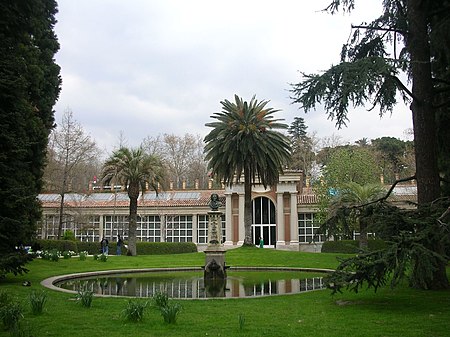
Garden used for scientific study, conservation and public display This article is about a particular type of garden. For other uses, see Botanical garden (disambiguation). Orto botanico di Pisa operated by the University of Pisa: the first university botanic garden in Europe, established in 1544 under botanist Luca Ghini, it was relocated in 1563 and again in 1591. A botanical garden or botanic garden[nb 1] is a garden with a documented collection of living plants for the purpose of scie…

Resolusi 1692Dewan Keamanan PBBBurundiTanggal30 Juni 2006Sidang no.5.479KodeS/RES/1692 (Dokumen)TopikSituasi di BurundiRingkasan hasil15 mendukungTidak ada menentangTidak ada abstainHasilDiadopsiKomposisi Dewan KeamananAnggota tetap Tiongkok Prancis Rusia Britania Raya Amerika SerikatAnggota tidak tetap Argentina Denmark Ghana Jepang Rep. Kongo Peru Qatar Slowakia Tanzania Yunani Resolusi 1692 Dewan Keamanan Per…

Russian politician In this name that follows Eastern Slavic naming customs, the patronymic is Vladimirovich and the family name is Kozyrev. Andrei KozyrevąÉąĮą┤čĆąĄą╣ ąÜąŠąĘčŗčĆąĄą▓Minister of Foreign Affairs of RussiaIn office11 October 1990 ŌĆō 6 January 1996PresidentBoris YeltsinPreceded byVladimir VinogradovSucceeded byYevgeny Primakov Personal detailsBorn (1951-03-27) 27 March 1951 (age 73)Brussels, BelgiumSpouseElena KozyrevaAlma materMoscow State Institute of Internation…

Model of the real economy Not to be confused with Circular economy. This graph shows the circular flow of income in a five-sector economy. The flow of money is shown with purple, and the flow of goods and services is shown with orange. Money flows in the opposite direction from goods and services.[1] Basic diagram of the circular flow of income. The functioning of the free-market economic system is represented with firms and households and interaction back and forth.[2] The circu…
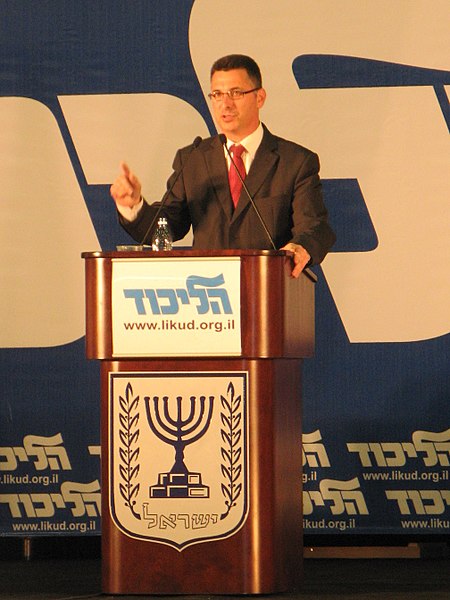
Israeli politician Gideon Sa'arSa'ar in 2023Ministerial roles2009ŌĆō2013Minister of Education2013ŌĆō2014Minister of the Interior2021Deputy Prime Minister2021ŌĆō2022Minister of Justice2023ŌĆō2024Minister without portfolioFaction represented in the Knesset2003ŌĆō2014Likud2019ŌĆō2020Likud2021ŌĆō2022New Hope2022ŌĆō2024National Unity2024ŌĆōNew Hope Personal detailsBorn (1966-12-09) 9 December 1966 (age 57)Tel Aviv, Israel Gideon Moshe Sa'ar (Hebrew: ūÆūōūóūĢū¤ ū×ū®ūö ūĪūóū©; born 9 December …

Intendancy of the Spanish Empire Intendencia de GuamangaIntendancy of the Spanish Empire1784ŌĆō1824 Coat of arms CapitalHuamangaGovernmentIntendant ŌĆó 1784ŌĆō1786 Nicol├Īs Manrique de Lara, Marquis of Lara (first)ŌĆó 1823ŌĆō1824 Jos├® Montenegro (last) Historical eraViceroyalty of PeruŌĆó Established 1784ŌĆó Dissolved 9 December 1824 Subdivisions ŌĆó TypePartidos ŌĆó UnitsSee relevant section Succeeded by Department of Huamanga The Intendancy of Huam…

┘ćž»ž║ž▒┘ä┘Ŗ ž¦┘äžźžŁž»ž¦ž½┘Ŗž¦ž¬ 51┬░34ŌĆ▓34ŌĆ│N 0┬░36ŌĆ▓07ŌĆ│W / 51.576┬░N 0.602┬░W / 51.576; -0.602 [1] ž¬┘éž│┘Ŗ┘ģ žźž»ž¦ž▒┘Ŗ ž¦┘äž©┘äž» ž¦┘ä┘ģ┘ģ┘ä┘āž® ž¦┘ä┘ģž¬žŁž»ž®[2] ž¦┘䞬┘éž│┘Ŗ┘ģ ž¦┘䞯ž╣┘ä┘ē ž©ž¦┘ā┘Ŗ┘åž║┘枦┘ģž┤┘Ŗž▒ [┘äž║ž¦ž¬ žŻž«ž▒┘ē] ž«žĄž¦ž”žĄ ž¼ž║ž▒ž¦┘ü┘Ŗž® ž¦┘ä┘ģž│ž¦žŁž® 6.8 ┘ā┘Ŗ┘ä┘ł┘ģž¬ž▒ ┘ģž▒ž©ž╣ ┘ģž╣┘ä┘ł┘ģž¦ž¬ žŻž«ž▒┘ē SL2 ž▒┘ģž▓ ž¦┘ä┘枦ž¬┘ü 01753 ž▒┘ģž▓ ž¼┘Ŗ┘ł┘å┘Ŗ…

Use of natural resources for economic growth Exploitable and Economic exploitation redirect here. For other uses, see Exploitation (disambiguation). The exploitation of natural resources describes using natural resources, often non-renewable or limited, for economic growth[1] or development.[2] Environmental degradation, human insecurity, and social conflict frequently accompany natural resource exploitation. The impacts of the depletion of natural resources include the decline o…
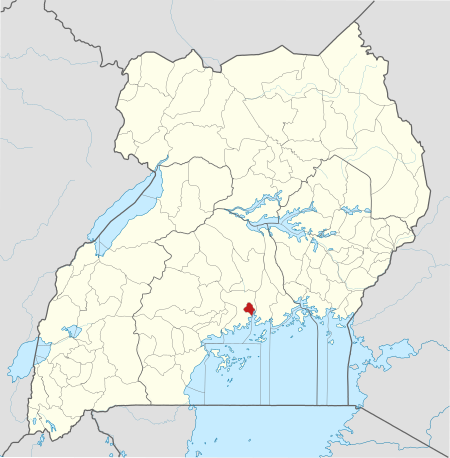
Road in Uganda Not to be confused with KampalaŌĆōEntebbe Road. EntebbeŌĆōKampala ExpresswayRoute informationLength32 mi (51 km)HistoryDesignated in 2012Completion in 2018[1]Major junctionsSouth endEntebbe International AirportMajor intersectionsAbayita AbabiriKajjansiNorth endBusega LocationCountryUganda Highway system Roads in Uganda The EntebbeŌĆōKampala Expressway, also known as the KampalaŌĆōEntebbe Expressway or the EntebbeŌĆōKampala Highway, is a four-lane …
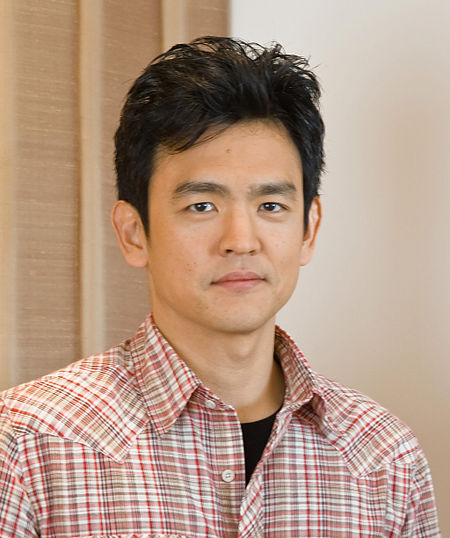
John ChoCho in 2008LahirJohn Yohan Cho16 Juni 1972 (umur 52)Seoul, Korea SelatanPekerjaanAktorTahun aktif1997ŌĆōsekarangSuami/istriKerri Higuchi (m. 2006)Anak2 John Yohan Cho (lahir 16 Juni 1972) adalah seorang aktor dan musisi Amerika Serikat yang terkenal karena perannya sebagai Harold Lee di Harold & Kumar dan John, MILF Guy No. 2 yang memopulerkan istilah MILF di American Pie. Ia juga membintangi film Asia Amerika Better Luck Tomorrow dan Yellow. …

Nikon CorporationµĀ¬Õ╝Åõ╝ÜńżŠ ŃāŗŃé│Ńā│JenisPerusahaan publikKode emitenTYO: 7731IndustriConsumer electronicsDidirikanTokyo, Jepang 25 Juli 1917; 106 tahun lalu (1917-07-25)KantorpusatYurakucho, Tokyo, JapanWilayah operasiSeluruh duniaTokohkunciMichio Kariya (Chairman)Makoto Kimura (President)Produkkamera, kamera SLR, binokular / monokular, teleskop binokular, laser rangefinder, field microscopy, precision equipment, mikroskop, ophthalmic lenses and instrumental productsPendapatan ┬ź887.5 m…

Questa voce sull'argomento cantanti olandesi ├© solo un abbozzo. Contribuisci a migliorarla secondo le convenzioni di Wikipedia. TacoTaco nel 2012 Nazionalit├Ā Paesi Bassi Indonesia GenerePop Periodo di attivit├Ā musicale1982 ŌĆō in attivit├Ā StrumentoVoce EtichettaRCAPolydorPerle RecordsDingDing Music Album pubblicati9 Studio7 Live- Raccolte2 Sito ufficiale Modifica dati su Wikidata ┬Ę Manuale Taco Ockerse, noto semplicemente come Taco (Jakarta, 21 luglio …

